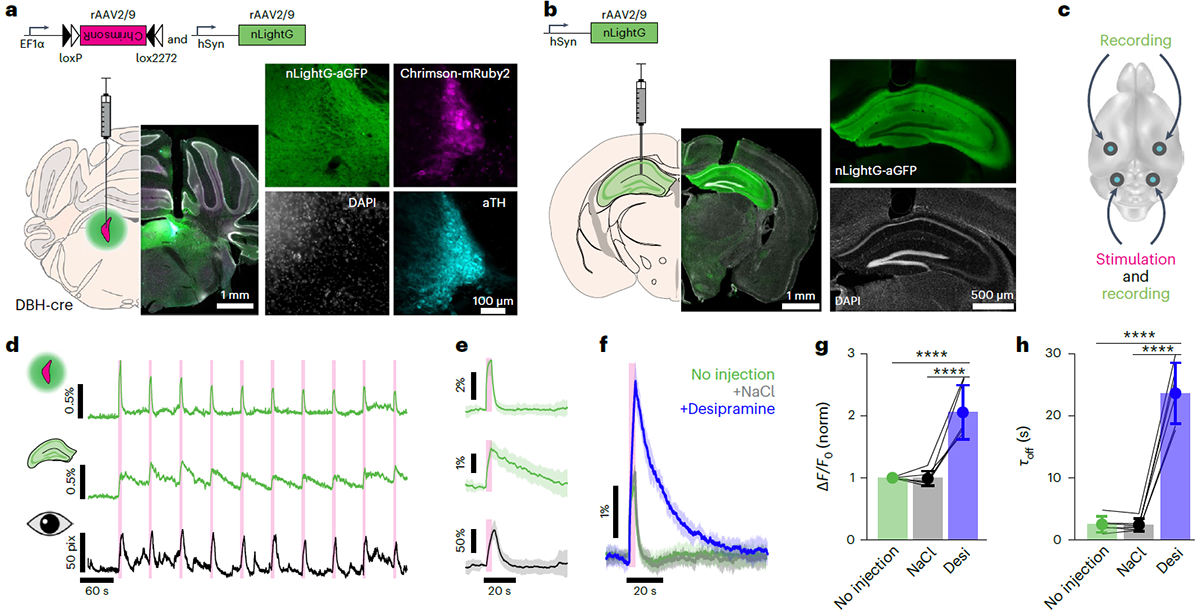Published in Nature Methods (2023)

A figure from this article. Image copyright: Nature.
Authors
Zacharoula Kagiampaki, Valentin Rohner, Cedric Kiss, Sebastiano Curreli, Alexander Dieter, Maria Wilhelm, Masaya Harada, Sian N. Duss, Jan Dernic, Musadiq A. Bhat, Xuehan Zhou, Luca Ravotto, Tim Ziebarth, Laura Moreno Wasielewski, Latife Sönmez, Dietmar Benke, Bruno Weber, Johannes Bohacek, Andreas Reiner, J. Simon Wiegert, Tommaso Fellin & Tommaso Patriarchi
Paper presented by Dr. Reinis Svarcbahs and selected by the NIDA TDI Paper of the Month Committee
Publication Brief Description
Norepinephrine (NE) is involved in mediating psychostimulant-associated behaviors such as drug discrimination, reinstatement of drug seeking and sensitization. Existing GPCR-based NE sensors are based on alpha-2a adrenergic receptors and do not exhibit the kinetic properties needed to investigate in vivo NE dynamics in response to different drugs. Kagiampaki et al. developed a new set of fluorescent indicators based on the alpha-1a adrenergic receptors (nLightG and nLightR, G for green and R for red respectively). These novel NE sensors have improved selectivity for NE over DA and have approximately ten times faster kinetics compared to the previous generation NE indicators. The nLight sensors combined with fiber photometry and two-photon imaging could be used to investigate spatial and temporal aspects of NE signaling in animal models of substance use disorder.
Sensitive multicolor indicators for monitoring norepinephrine in vivo Journal Article
In: Nat Methods, vol. 20, no. 9, pp. 1426–1436, 2023, ISSN: 1548-7105.
